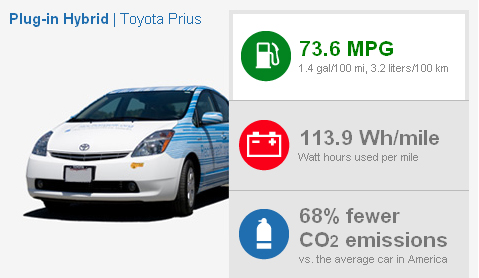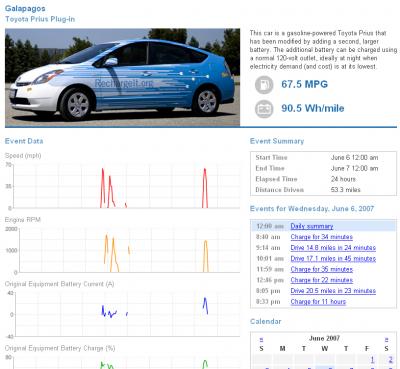Google has unveiled a series of new environmentally-friendly initiatives including the installation of solar panels on the roof of its Mountain View, CA headquarters. This solar installation, will generate an electrical output that is enough to supply an estimated 1,000 average California homes. The Internet behemoth’s philanthropic arm, Google.org, also announced its “RechargeIT” initiative. By accelerating the adoption of plug-in hybrid electric vehicles, Google hopes to reduce greenhouse gas emissions. As part of the alternative-energy program, Google.org is awarding $1 million in grants and has announced plans for a $10 million request for proposals (RFP) to fund plug-in research and education.
The really cool thing about the RechargeIt site is that they have four Prius’ (two hybrid two plug-in hybrid) and they have them outfitted with vehicle sensors so that you can see day to day how each one is doing in what kind of driving conditions. So far the plug-in hybrid models are getting a whopping 73.6 MPG, compared to 40.9 MPG for the hybrid models (both numbers are averages).

From a market perspective one has to take seriously anything Google does. With more money than god, and a good chance of staying that way for the foreseeable future Google means business. Plug in hybrids make so much sense it’s a wonder every major car company has not released a model yet. At some point in the future it is clear that all cars will be electric, with the potential for small on board gas powered generators to recharge the batteries.
The thing I continue to find most intriguing about plug-in’s is the idea of vehicle to gird technology. If every car in America was in essence a little gird connected battery we would in essence solve the problem of what to do with extra renewable energy. If it’s windy but no one needs power you store it in the cars, if it’s not windy and people need power you buy it back from the car owner. Solar panels on your garage could charge your car, wind turbines at the office parking garage could power the companies fleet. What would really be interesting is if you started using plug-in hybrid cars with renewable fuel sources. Biodiesel plug-in hybrid anyone? If you are interested be sure to check out Google’s excellent resource page.
